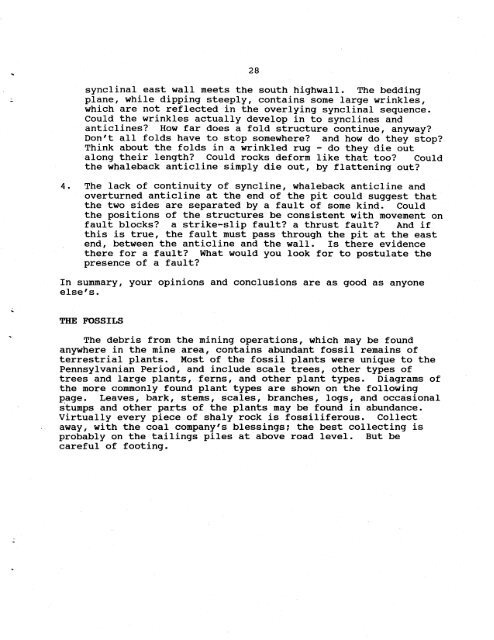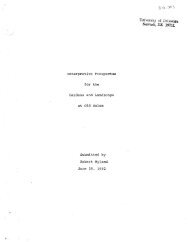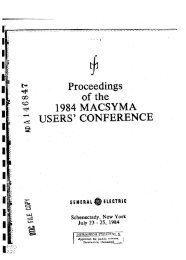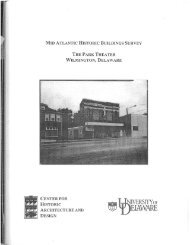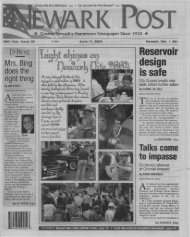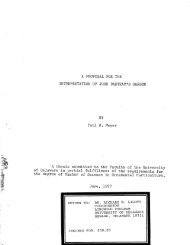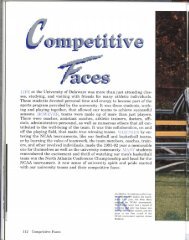FTELD TRIP ACROSS THE APPALACHTAN OROGENIC BELT
FTELD TRIP ACROSS THE APPALACHTAN OROGENIC BELT
FTELD TRIP ACROSS THE APPALACHTAN OROGENIC BELT
You also want an ePaper? Increase the reach of your titles
YUMPU automatically turns print PDFs into web optimized ePapers that Google loves.
28<br />
synclinal east hrall meets the south highwall. The bedding<br />
pIane, while dipping steeply, contains some large wrinkles,<br />
which are not reflected in the overlying synclinal sequence.<br />
Could the wrinkles actually develop in to synclines and<br />
anticlines? How far does a fold structure continue, anyway?<br />
Don't all folds have to stop somewhere? and how do they stop?<br />
Think about the folds in a wrinkled rug - do they die out<br />
along their length? Could rocks deforrn tike that too? Could<br />
the whaleback anticline simply die out, by flattening out?<br />
4. The lack of continuity of syncline, whaleback anticline and<br />
overturned anticline at the end of the pit could suggest that<br />
the two sides are separated by a fautt of some kind. Could<br />
the positions of the structures be consistent with movement on<br />
fault blocks? a strike-slip fault? a thrust fault? And if<br />
this is true, the fault must pass through the pit at the east<br />
end, between the anticline and the wall. Is there evidence<br />
there for a fault? What would you look for to postulate the<br />
presence of a fault?<br />
In summary, your opinions and conclusions are as good as anyone<br />
else's .<br />
TIIB TOSSTLS<br />
The debris fron the mining operations, which rnay be found<br />
anywhere in the nrine area, contains abundant fossil remains of<br />
terrestrial plants. Most of the fossil plants brere unique to the<br />
Pennsylvanian Period, and include scale trees, other types of<br />
trees and large plants, ferns, and other plant types. Diagrams of<br />
the more commonly found plant types are shown on the following<br />
p.age. Leaves, bark, stems, scales, branches, logs, and occasional<br />
stumps and other parts of the plants may be found in abundance.<br />
VirtualIy every piece of shaly rock is fossiliferous. Collect<br />
away, with the coal company's blessingsi the best collectingr is<br />
probably on the tailings piles at above road level. But be<br />
careful of footing.


